-
Titolo
-
The Nazis figured it would take 3,5 years to land our military railroads in France - but- they are highballing now
-
Article Title and/or Image Caption
-
The Nazis figured it would take 3,5 years to land our military railroads in France - but- they are highballing now
-
extracted text
-
ON JUNE 6, 1944—D-day—more than
20,000 railroad cars and almost 1,500
locomotives sat on sidings and in marshal-
ing yards of southern England. They lay in
strings, mile on mile, like delicately articu-
lated centipedes.
The Germans knew they were there. Air
reconnaissance had told them so. They knew
what they were intended for. And they
weren't worried.
The Germans were sure that rolling stock
never could be brought across 100 miles of
white-capped water and landed in Nor-
mandy to carry supplies for the sustained
offensive necessary to drive them out of
France.
‘They held the ports. They would
hold them to the bitter end. After
that they would blow up the docks.
How could the British and the
Americans land heavy rolling stock
without ports? It was that simple.
Yet on D-day plus 38, long before
any Nazi-demolished port and its
docks had been reconstructed, those
cars and some light Diesel locomo-
tives from those English sidings
and yards began moving into
France. They went right in across
the sloping, sandy beaches in spite
of a 24-foot tide.
How this was done, how one of
the war's great engineering feats
was planned and executed, can now
be told for the first time.
Much had preceded that chapter
of the invasion. The Military Rail-
way Service of the Army's Trans-
portation Corps, which did the job,
Was warring on five continents.
It delivered supplies to China's
Ledo Road lifeline across rain-swollen riv-
ers. It had taken some of Mussolini's dis-
carded, rusted steam locomotives out of
bomb-pitted yards and put them to work in
Italy. It had transformed an Iranian rail-
road known as “the Shah's toy” into a
major supply route for rushing arms to the
harried Russians.
The United States Army knew, as all
armies know, that you can’t fight continen-
tal wars without railroads. That is why the
rolling stock and rail centers of the enemy
are A-1 priority targets of both tactical and
strategic air forces. That is why 42,000 men
and 2,000 officers were recruited from
America’s great civilian army of railroaders
for World War II. That is why American
locomotive manufacturers, who turned out
only 91 main-line units in 1940, began work-
ing around the clock after the Japs struck
Pearl Harbor. The United States became
the United Nations’ railroad arsenal.
America’s war of the rails began in Egypt
in 1942. The British needed help. Rommel
was knocking on the door to the Suez for an
ultimate junction with the Japanese press-
ing from the east.
Every time an Egyptian locomotive
chuffed, its steam and smoke drew fire from
a German strafing plane. So the United
States supplied Diesel-electrics to the Brit-
ish. It did more. It sent over the 760th
Diesel Shop Battalion to keep those locomo=
tives working. The British put their new
locomotives in the middle of trains where
German airmen seldom could distinguish
them from the boxcars—or, as Europeans
put it, the wagons.
At Naples the MRS plodded into the line
of fire to undo damage done by the Germans.
German demolition work had been typically
thorough. Rails looked like pretzels. Loco-
motive boilers were sieves. A device de-
signed with diabolical cunning had ripped
up untold miles of ties.
The Italians shrugged and said mo one
could make a railroad out of that debris.
The British rubbed their chins and said it
would take weeks.
Five days after the American railroaders
walked ashore, they had a railroad running!
That job was less complicated than the
one they undertook in the mountain-ridden
little kingdom of Iran. There had been built
“the Shah's toy,” a railroad that started
nowhere and ended nowhere. Riza Shan
Pahlevi, the country’s Cossack ruler, had
sunk $100,000,000 in it. It snaked up from
the Persian Gulf at 65 feet below sea level,
in temperatures running to 130 degrees, in"
to the bitter cold of the Elbruz and Luristan
mountains. It threaded through 225 tunnels
before it reached the capital, Teheran. From
Teheran the railroad splayed out to the
northwest and northeast. All told, it had
1,500 miles of roadbed, all single-tracked.
The Russians needed that railroad. In
the very critical days of early 1943, the MRS
moved in. It found that the British and
American locomotives in use were not pow-
erful enough to negotiate a roadbed with
hairpin turns at a speed necessary to meet
the Russian target of supply at the Caspian
Sea. It found that the Persian Gulf port
would not accommodate the deep-draft ships
streaming over from America.
A fleet of Diesel-electrics— streetcars,”
in railroad slang—was ordered. A hundred
miles of new line was built from a whistle
stop called Awaz to a better port at Khor-
ramshahr. By May “the Shah's toy" was
delivering 18 percent more tonnage than the
Russians had specified, notwithstanding the
fact that natives complicated operations by
stealing the oiled stuffing out of journal
boxes to make camp fires.
The Normandy operation was something
else. Never in a major war had rolling stock
been landed on a shore where the enemy
stood at the battlements.
That is where a man named Sidney H.
Bingham comes in. In peacetime Bingham
ran the New York subways. Emphatic, ima-
ginative, he was put into a uniform with
Transportation Corps insignia on his lapels
and assigned to planning railway operations
for the invasion.
The Military Railway Service had col-
lected the roiling stock for the job. By
ordinary means it would take 3 1/2 years to
get those locomotives and cars to France,
even without German interference. That
was as fast as they could be shuttled over
in the train-carrying ships the British used
in trans-Channel work before the war.
Moreover, the British ships would need
docks for unloading.
Sitting on a joint British-American board,
Bingham, a colonel, made a suggestion:
Why not load this stuff into U. S. Navy
LST's (landing ships, tank) and roll it across
the beaches? The LST's had little or no
draft, and he would figure out some way to
get the cars and a few Diesel locomotives
off the boats.
Somebody in the room snorted. That 24-
foot tide would allow just 90 minutes out of
each 24 hours for unloading on a beach,
granting the stuff could be unloaded on a
beach.
This was in July, 1942. Colonel Bingham
ignored the snort and set to work. Experi-
mentally he laid tracks in an LST. Then he
loaded rolling stock in it and sailed into
rough water to see whether the boat would
behave properly. It would.
Now for the big problem. He laid a
“breathing bridge” in quick-setting concrete
on an English beach at low tide, fitted a
wheeled ramp to the lip of the LST's cargo
deck, and rolled his cars ashore regardless
of the tide level.
Nobody snorted.
On D-day plus 25 Col. Bingham put down
four “breathing bridges” on a Normandy
beach at low tide. Thirteen days later he
started pushing converted LST's across the
100 miles of open water to the Cherbourg
peninsula. Each boat carried 22 cars. It
took him exactly 26 minutes to load in Eng-
land and exactly 21 minutes to unload in
France. He knew. He timed it.
By mid-October, aided by some of the
Cherbourg docks slowly coming back into
use after the usual Nazi destruction, he had
delivered a total of 20,000 cars and 1,300
locomotives.
This seeming delay in delivering the big
locomotives was part of the plan. Gen. Ber-
nard Montgomery stated flatly that he would
have no steam locomotives in his area of
operations during go first critical weeks.
The railroad crews, he complained, were al-
ways right up behind the front lines, and
the smoke and steam made targets for
enemy artillery. So they used Diesels.
The Second Battle of France could not
have been fought without the Transporta-
tion Corps’ cars and locomotives. Of the
30,000 locomotives the French railroads nor-
mally operated, less than 4,000 were found
and most of these were in very bad shape.
The campaign in France lent eloquent
testimony to the role of the railroad in war.
In the 81 days that the “Red Ball Express,”
the truck supply route between Normandy
and Paris, operated while the French rail
lines were being refurbished, it toted a half
million tons of supplies. That much is being
carried every 23 days now by the rails sup-
plying the front.
The MRS is patterned strictly on ortho-
dox railroad organizations, The basic unit
is the Railway Operating Battalion, made up
of four companies. Each has its duties:
dispatching and supplies, track and signal
maintenance and maintenance of way,
roundhouse operation and equipment repair,
and the actual operation of the trains. A
battalion runs a division of about 100 miles.
Three or four Railway Operating Bat-
talions, together with a Railway Shop Bat-
talion, a Base Depot Company and a Mobile
Railway Workshop, make up a typical grand
division. That corresponds in scope and au-
thority to a general superintendent's domain
on an American railroad.
Maj. Gen. Charles P. Gross, chief of trans-
portation, is responsible for the MRS. Brig.
Gen. Andrew F. McIntyre, formerly of the
Pennsylvania, handles details at home.
A lack of standardization complicates the
job. Clearances are the bane of the car and
locomotive designer's pencil. Even in peace-
time clearances lead to some fantastic rout-
ings. Any oversize shipment—one with con-
siderable “overhang,” projecting beyond a
car's head-on silhouette—bound from New
York to Washington, for instance, has to
travel by way of Harper's Ferry, Va. There
are some tunnels on the direct route that it
won't clear.
In manufacturing for the Russians, Amer-
: ican car and locomotive makers had few
prohibitions. The average width of rolling
stock in the United States is 10 feet, 8
inches; its height from the top of the rail, 15
feet. Russian stock runs to widths of more
than 12 feet and heights of more than 17.
In England, the width averages only 9 feet
and the height less than 13.
Cars and locomotives for England had to
be equipped with the exact opposite of the
American braking system. Over here com-
pressed air is used to keep the brake shoe
off the wheel; when the air is released the
brake clamps on. In England a vacuum in
the air line sucks the shoe onto the wheel.
American manufacturers discovered they
had to take the Russian temperament into
account in filling lend-lease orders. Spare
wheels had to be shipped by the thousands.
When a Russian locomotive engineer comes
to a grade and claps on the brakes, he takes
no half measures.
They discovered they had to equip loco-
motives intended for India with extra-bril-
liant headlights. That was so the engineers
could see the sacred cows, wild elephants,
and human foot traffic on the right of way.
There was the field problem of increasing
the traffic on Indian railroads to deliver sup-
plies to the Ledo Road truck route and to
the airfields used by planes flying “the
Hump.” The Bengal and Assam Railway
had twin gauges, extra wide and narrow. It
wound north from Calcutta for 800 miles,
and then all the supplies had to be trans-
shipped on to meter gauge for almost 1,000
miles more.
Hol 91 Of 16 asl oc JouIs Le harlow
gauge had been inoperative for as much as
six months of the year when rivers boiled
out of their banks. U. S. railroad men re-
channeled the rivers and built a bridge as a
substitute for the car ferries traditionally
used for the crossing of the mile-wide Brah-
maputra River. Where three or four trains
a day ran before the war, from 21 to 25 are
now operating with 12,000 wagons and 550
locomotives of the 2-8-2 type, marked
“Made in U. S. A.”
The MRS has had its compensations.
When it landed behind the assault troops in
North Africa, what should meet its delighted
eye but a score of “General Pershing” loco-
motives that the United States shipped to
France for World War I. They were as good
as ever.
German railroads, with 44,000 miles of
standard gauge, present no great problem
to the Army. Nor will the railroads of
China and Japan. In row upon row of secret
files in Washington's sprawling Pentagon
Building arz details on Japanese and Chi-
nese railroads.
The Military Railway Service of the
Army's Transportation Corps has only one
problem it hasn't solved. It would like to
know how to keep monkeys from swarming
into passenger carriages when trains stop
at stations in India.
-
Autore secondario
-
Devon Francis (writer)
-
Lingua
-
eng
-
Data di rilascio
-
1945-02
-
pagine
-
76-83,220, 224
-
Diritti
-
Public domain
-
Archived by
-
Sami Akbiyik
-
Marco Bortolami (editor)
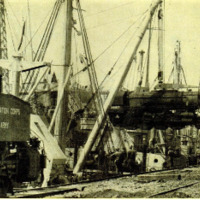 Ekran Resmi 2022-10-05 16.43.40.png
Ekran Resmi 2022-10-05 16.43.40.png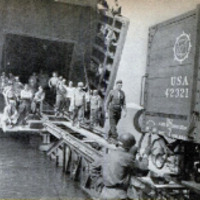 Ekran Resmi 2022-10-05 16.43.45.png
Ekran Resmi 2022-10-05 16.43.45.png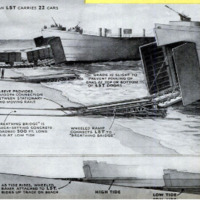 Ekran Resmi 2022-10-05 16.43.50.png
Ekran Resmi 2022-10-05 16.43.50.png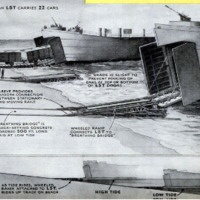 Ekran Resmi 2022-10-05 16.43.50.png
Ekran Resmi 2022-10-05 16.43.50.png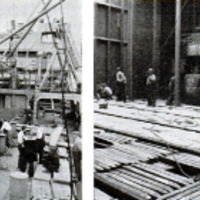 Ekran Resmi 2022-10-05 16.43.59.png
Ekran Resmi 2022-10-05 16.43.59.png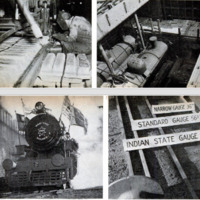 Ekran Resmi 2022-10-05 16.44.06.png
Ekran Resmi 2022-10-05 16.44.06.png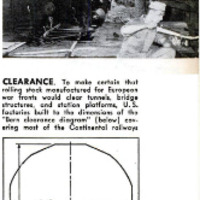 Ekran Resmi 2022-10-05 16.44.13.png
Ekran Resmi 2022-10-05 16.44.13.png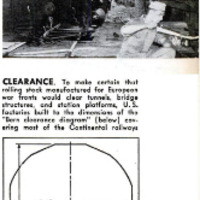 Ekran Resmi 2022-10-05 16.44.13.png
Ekran Resmi 2022-10-05 16.44.13.png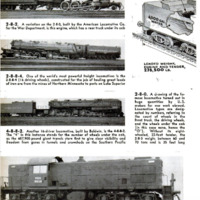 Ekran Resmi 2022-10-05 16.44.26.png
Ekran Resmi 2022-10-05 16.44.26.png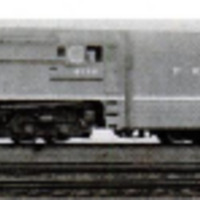 Ekran Resmi 2022-10-05 16.44.34.png
Ekran Resmi 2022-10-05 16.44.34.png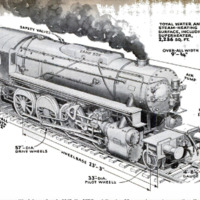 Ekran Resmi 2022-10-05 16.44.40.png
Ekran Resmi 2022-10-05 16.44.40.png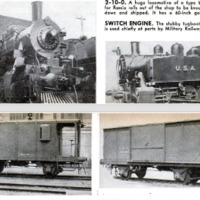 Ekran Resmi 2022-10-05 16.44.47.png
Ekran Resmi 2022-10-05 16.44.47.png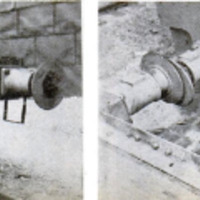 Ekran Resmi 2022-10-05 16.44.54.png
Ekran Resmi 2022-10-05 16.44.54.png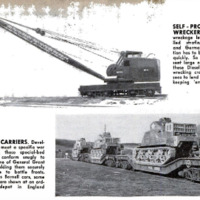 Ekran Resmi 2022-10-05 16.44.59.png
Ekran Resmi 2022-10-05 16.44.59.png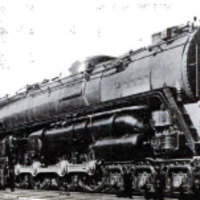 Ekran Resmi 2022-10-05 16.45.06.png
Ekran Resmi 2022-10-05 16.45.06.png













